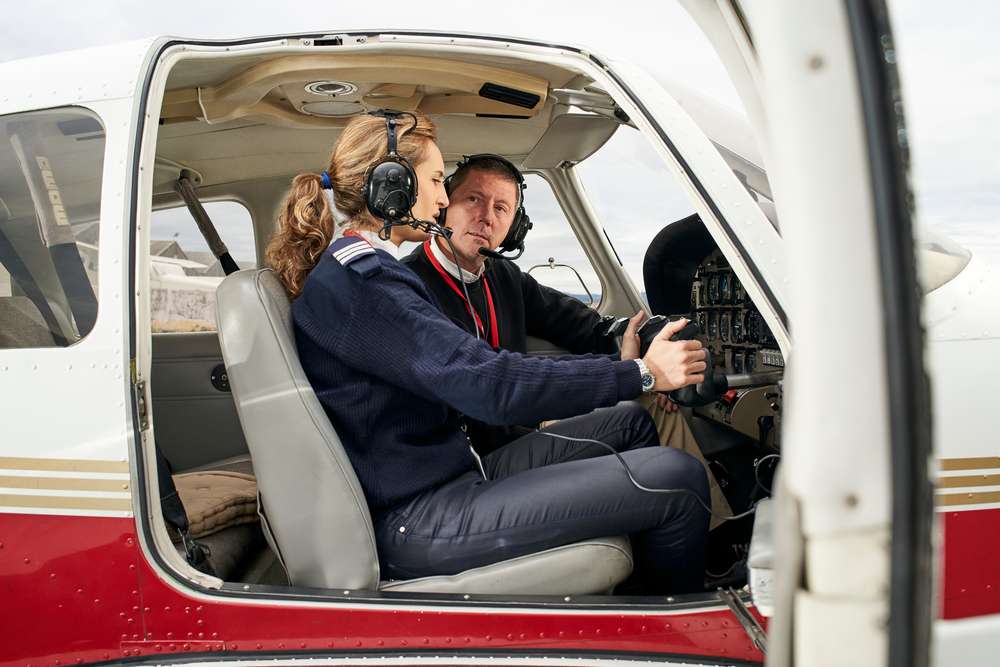An Overview of Aviation Training for English Speakers in Belgium
Belgium presents a dynamic environment for those interested in aviation training, particularly for individuals who are proficient in English. This growing industry offers insights into various working conditions and requirements. Engaging with this sector can provide a comprehensive understanding of the aviation landscape in Belgium.

Belgium stands as a significant hub within European aviation, hosting major airlines, cargo operations, and maintenance facilities. For English speakers considering aviation careers, the country presents numerous training pathways that align with international standards set by the European Union Aviation Safety Agency (EASA). The aviation training landscape encompasses various specializations, including flight training, aircraft maintenance engineering, cabin crew preparation, and ground operations management. Each pathway requires specific qualifications, language proficiency, and technical competencies that prepare individuals for demanding roles within the industry.
Understanding the Aviation Industry Landscape in Belgium
Belgium’s aviation sector comprises several key components that create employment and training opportunities. Brussels Airport serves as the primary international gateway, while regional airports in Charleroi, Liège, and Antwerp handle passenger and cargo traffic. The country hosts headquarters for major aviation organizations and maintains strong connections to European aviation networks. Training institutions across Belgium offer programs recognized throughout the European Economic Area, allowing graduates to pursue careers across multiple countries. The industry encompasses commercial airlines, cargo operators, maintenance organizations, ground handling services, and aviation authorities. Understanding this ecosystem helps prospective trainees identify which specialization aligns with their career goals and aptitudes. The Belgian aviation sector maintains high safety standards and regulatory compliance, requiring all professionals to meet stringent certification requirements regardless of their specific roles.
English Language Proficiency and Its Role in Aviation Careers
English serves as the universal language of aviation, mandated by the International Civil Aviation Organization (ICAO) for all international flight operations. Pilots, air traffic controllers, and other aviation professionals must demonstrate English proficiency at specific levels defined by ICAO standards. For English speakers, this requirement provides a natural advantage when pursuing aviation careers in Belgium or elsewhere in Europe. However, functional fluency differs from the technical aviation English required for professional communication. Training programs typically incorporate aviation-specific terminology, phraseology, and communication protocols that ensure safety and efficiency in operations. English speakers still need to master these specialized communication standards through formal training. Additionally, while English dominates operational contexts, knowledge of French, Dutch, or German can enhance career prospects within Belgium’s multilingual environment. Many training institutions offer courses in English, making programs accessible to international students and Belgian residents who prefer English-medium instruction.
Insights into Conditions and Growth within the Aviation Sector
The aviation industry experiences cyclical patterns influenced by economic conditions, technological advancements, and global events. Recent years have demonstrated both the sector’s vulnerability to disruptions and its capacity for recovery and adaptation. Belgium’s aviation sector has shown resilience, with cargo operations experiencing growth while passenger traffic gradually recovers. Employment conditions for aviation professionals vary by role and specialization. Pilots typically work irregular schedules with periods away from home, while maintenance engineers may have shift-based schedules at airport facilities. Cabin crew face demanding physical requirements and customer service expectations. Ground operations staff work in fast-paced environments coordinating multiple activities simultaneously. Career progression pathways exist within most aviation specializations, allowing professionals to advance into supervisory, training, or management roles. The industry increasingly emphasizes sustainability, digital transformation, and automation, creating demand for professionals who combine traditional aviation skills with technological competencies. Prospective trainees should consider long-term industry trends when selecting their specialization and training pathway.
Training Pathways and Certification Requirements
Aviation training in Belgium follows EASA regulations, ensuring standardization across European member states. Pilot training typically begins with a Private Pilot License (PPL), progressing through Commercial Pilot License (CPL) and potentially to Airline Transport Pilot License (ATPL) for those seeking airline careers. Flight training requires medical certification, theoretical examinations, and minimum flight hours under instruction. Aircraft maintenance training leads to EASA Part-66 licenses in various categories depending on aircraft type and systems. These programs combine classroom instruction with practical workshop experience and on-the-job training. Cabin crew training covers safety procedures, emergency protocols, first aid, and customer service, typically completed in shorter intensive courses. Ground operations training varies by specialization, including baggage handling, ramp operations, flight dispatch, and airport management. Each pathway has specific entry requirements, duration, and cost implications that candidates must research thoroughly before committing to a program.
Selecting Appropriate Training Institutions
Belgium hosts several aviation training organizations offering EASA-approved programs. Flight schools operate at various airports, providing theoretical and practical flight training with different aircraft types. Some institutions specialize in integrated training programs that take students from zero experience through commercial licenses, while others offer modular training allowing students to progress at their own pace. Technical training centers affiliated with maintenance organizations provide Part-66 programs with access to modern aircraft and equipment. Universities and colleges offer aviation management and engineering degrees that combine academic study with industry-relevant skills. When evaluating training providers, prospective students should verify EASA approval status, instructor qualifications, fleet condition and availability, safety records, and graduate employment outcomes. Visiting facilities, speaking with current students, and reviewing completion rates provides valuable insights beyond promotional materials. Location also matters, as training at larger airports offers exposure to diverse aircraft and operational complexity, while smaller facilities may provide more personalized instruction and potentially lower costs.
Financial Considerations and Investment Planning
Aviation training represents a significant financial investment that varies considerably by specialization and training pathway. Prospective students should develop comprehensive budgets that account for tuition, examination fees, medical certifications, accommodation, living expenses, and potential income loss during full-time training. Flight training costs depend on aircraft type, fuel prices, instructor rates, and required flight hours. Maintenance training programs have lower hourly costs but extend over longer periods. Cabin crew courses typically cost less but offer shorter training duration. Various financing options exist, including personal savings, family support, bank loans, and occasionally employer-sponsored training programs. Some airlines offer cadet programs where training costs are covered in exchange for employment commitments. Prospective trainees should research all available options and carefully evaluate the return on investment based on realistic salary expectations and employment prospects. Creating contingency funds for unexpected expenses or extended training timelines helps manage financial stress during the training period.
Prices, rates, or cost estimates mentioned in this article are based on the latest available information but may change over time. Independent research is advised before making financial decisions.
Conclusion
Pursuing aviation training in Belgium offers English speakers access to high-quality programs aligned with European standards and recognized internationally. The country’s strategic position within European aviation, combined with its multilingual environment and established training infrastructure, creates favorable conditions for aspiring aviation professionals. Success requires careful research into specific career pathways, realistic assessment of personal aptitudes and circumstances, thorough evaluation of training providers, and comprehensive financial planning. The aviation sector demands dedication, continuous learning, and adaptability, but rewards qualified professionals with dynamic careers in a globally connected industry. By understanding the industry landscape, language requirements, growth trends, and training options, prospective students can make informed decisions that align with their long-term career aspirations.




